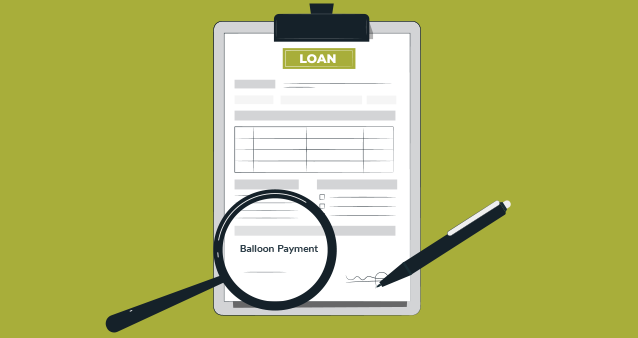Balloon Payment Hacks

Vehicle financing with a balloon payment is an attractive option, but remember that you'll still have to pay the piper at the end of your term!
A balloon payment plan sounds like a weightless option to help you buy a vehicle, but it can become a lead balloon if you don't manage it properly.
There are pros and cons to a balloon payment plan, and how you manage it determines whether it's the right Vehicle Finance option for you.
Learn more: Is a Balloon Payment Right for Me?
How does a balloon payment work?
Also known as a 'residual payment', a balloon payment is a portion of the cost of your car that is deferred until the end of your payment term. The timing is key here: as opposed an up-front deposit, a balloon payment is paid at the end.
You'll need to either pay it as a lump sum or have it refinanced before you can take ownership of the car. You can apply to your vehicle finance originator to work in a balloon payment of up to 35% of the purchase price of the vehicle.
Here's how it works: Let's say you want to buy a car valued at R300,000. The monthly repayment (with 0% deposit) would be around R6,228 per month over five years. If that's too hard on your pocket, you could opt for a balloon payment of 20% or R60,000.
For balloon payments, the monthly repayments are calculated on the principal loan amount, which in this case would be R300,000 minus the R60,000 balloon payment... So, R240,000. That brings your instalment down to R5,432, which makes buying the vehicle more attainable.
But – and it's a big but – the interest rate is calculated on the total loan amount, including the balloon payment. In this case, that's the full R300,000. Also remember that you'll have to pay — or refinance — that R60,000 at the end of the five-year term before the vehicle is yours. You can figure out the number that works best for you using a Vehicle Finance Calculator.
Managing your Balloon Payment
If you're smart about managing your balloon payment, you can give yourself a better chance of paying off the residual amount at the end of the term.
If you're a conscientious saver, putting away the R796 difference between a 0% deposit outright purchase (R6,228) and the balloon payment purchase (R5,432) can help you make a significant dent in your balloon payment at the end of the deal. But be sure to notify your bank or financial services provider that the additional money should go towards decreasing the balloon payment amount.
Read more: Are balloon payments a good way to save on car repayments?
If you put that money in a savings account each month, you'll accumulate R47,760 over the five-year term. This means that if you're not earning interest, you'll 'only' have to find R12,240 to pay off the rest of the balloon balance and make the car your own. It's a lot of money, but still way less than R60,000!
If you're smarter, you'll deposit it into an interest-bearing account every month and build on it. There are plenty of variables to consider, but putting it in a five-year fixed deposit account and contributing monthly could actually see you being able to pay off the residual amount and still just about have some savings in the bank to celebrate owning your vehicle.
If you're unable to put money away every month, you can look at Vehicle Refinance for the residual amount at the end of the term. In an ideal world, your financial situation may have improved over the course of five years, and you'll qualify for a better interest rate on the balance. The prime lending rate may be lower, which will work in your favour as you'll pay less interest that way. Then again, it may be higher... in which case you'd pay more.
You'll also have to pay interest on the capital and on the refinanced amount – so be careful here, and be sure to get your sums right!
As always, it's best to look around for the best deal and to do your sums before committing. Compound interest is great if you have money in the bank, but it can end up costing you way more than you anticipated if you owe money instead — especially on a large amount like 35% of the value of your car!
This article is for informational purposes only and should not be construed as financial, legal or medical advice.
Hippo Blog Categories





































